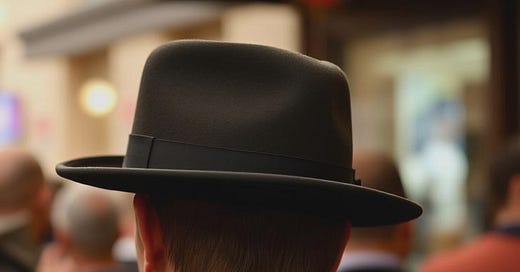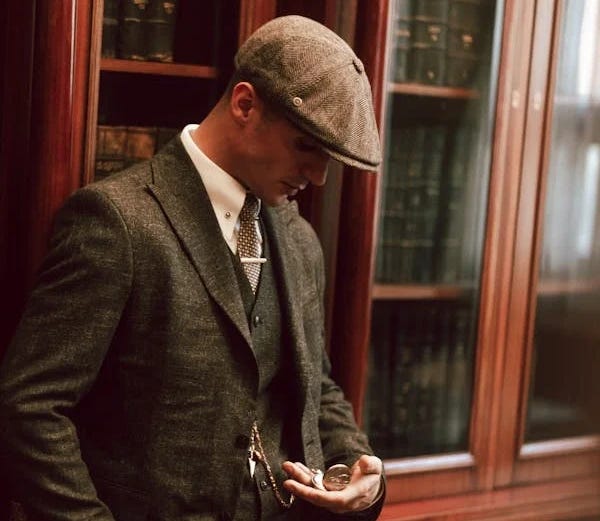Headwear can be a fashion statement, an extension of one’s persona or to convey a persona. It can hint at a person's creativity, status or attitude. For observing eyes, those who need to read people carefully, within a particular vicinity, the headwear can convey more. It can reveal intent, a person's affiliations, a person's demeanour, a need to show prowess, or indeed a desire to stay hidden, even in plain sight. Think of the gang member, who wears a hoodie.
A hat or helmet can be used for practical purposes protecting the head; keeping one warm and shielding one against the elements, be it sun or snow.
A hat can convey a person's wealth. The way it’s worn can convey a person's confidence, insecurities or mind set. In some extreme cases, hats have been used to conceal a blade.
In urban disengagement, hats can be great for blending in and losing people in a crowd. I recall a situation in the outer rim of Moscow, where I once used a rolled up beanie to blend into a street market crowd, to slip away from some muggers and leave the scene without incident.
Also, be aware of how headwear can sometimes restrict your visual skills. Big hats, helmets and thick hoods can have this effect.
When one needs to blend into an environment, not stand out or remain concealed, such as in the case of surveillance teams, headwear can work for you, or against you.
I note a job where we had to carry out counter surveillance, in a wealthy area that required time spent in a refined hotel. In walks one member of the team, the rider- ex police. Clad in black leather biker gear and black helmet, he looked like what in Colombia is referred to as 'the man on the motorbike'. Looking like a hitman, one will draw attention!
Celebrities and media personas sometimes use head scarves and hats to hide from the press or the public.
Timing can be key, when using headwear to merge into the grey. They can be used for a certain amount of time. Careful selection of headwear is also useful, in case you need to blend into a rough neighbourhood or wealthy environment.
Cultural details can also be picked up from the way one wears their hat and sometimes you may need headwear that makes you look like a local from the region you move through. In some cases, a person’s survival may depend on hiding their ethnicity from hostile locals.
Hats can also be provoking, particular if you’re wearing baseball caps with sporting insignia and footie hooligans supporting a rival team are around.
In certain tactical situations, hats can be used to confuse, deter, or shock an opponent. Such tactics must be used sparingly.
Headwear can convey involvement in gangs. Note the use of bandannas. It can be a contributing indicator of someone's readiness to be aggressive, pugilistic or unpredictable. In certain situations it can be used to identify friend or foe, as certain jungle conflicts have revealed.
On the positive side, hats can convey gentleness, artistic traits, poise and character.
I vaguely recall a Sinatra quote about the angle of the hat having relevance. Headwear can be a conversation opener or a way to invite banter. It can also be used to evoke a state or feeling.
Aran
About the author
Based in London, Aran Dharmeratnam is the founder of Tri-Tier. He specialises in personal safety and resilience training, often working with high-profile figures and their families. With experience in various areas of the security sector, Aran also works with global security companies involved in private investigations and strategic intelligence. He’s been deployed on the ground, in numerous cases. Aran’s insights have appeared in The Financial Times, The Spectator, Aviation Security International, and Security Management Today.
For consultations or training contact: office@tri-tier.com











